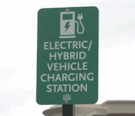EV progress in China In an interview with Walter Isaacson at the Aspen Ideas Festival and reported by Business Insider, Ford CEO Jim Farley, speaking on EV progress in China, “It’s the most humbling thing I have ever seen. Seventy percent of all EVs in the world, electric vehicles, are made in China.” Not only …
Tag: hybrid
Permanent link to this article: https://dashboardsymbols.com/2025/11/buying-a-pre-owned-ev-or-hybrid-find-a-battery-health-test/
Permanent link to this article: https://dashboardsymbols.com/2025/07/ford-humbled-by-ev-progress-in-china-and-remains-on-track-to-switch-to-hybrids/
We’ve got another owners manual fail, this one from Ford
Owners manual fail Another owners manual fail. has cropped up during our Ford symbols update. We’ve seen similar oversights in Mazda, Kia and Lincoln manuals as we get through our updates. In essence, we’re finding symbols deep inside the documents that are not shown in the original list of symbols assembled near the beginning of …
Permanent link to this article: https://dashboardsymbols.com/2024/12/weve-got-another-owners-manual-fail-this-one-from-ford/
Can zero-emission vehicles hit the California 35% by model year 2026? Toyota NA says no!
Zero-emission vehicle sales in California As reported by InsideEVs, zero-emission vehicle sales in California is mandated by the state’s Air Resources Board’s Advanced Clean Cars II to reach 35% of new vehicle sales by model year 2026. Toyota Motor NA’s (North America) chief operating officer says the EV regulations would be “impossible” to meet, despite …
Permanent link to this article: https://dashboardsymbols.com/2024/11/can-zero-emission-vehicles-hit-the-california-35-by-model-year-2026-toyota-na-says-no/
Its got to be the plug. Its about the plug!
About the plug A friend passed along a New York Times article titled Should I Get a Hybrid or Go Full Electric? The title is linked. After reading it, and combined with additional information that was already running around my head, I emailed him back remarking that its all about the plug! Two hybrids The …
Permanent link to this article: https://dashboardsymbols.com/2024/09/its-got-to-be-the-plug-its-about-the-plug/
Battery charge and warning symbols count on our page now at 14
Battery Charge and Warning Symbols After a Volvo symbols update, our EV, Hybrid and Plug-in Hybrid Battery Charge and Warning Symbols page now holds 14 images! And it is hardly the most prolific page! This is primarily because the automotive industry lacks discipline — or someone to apply that discipline — and continues the absurdity …
Permanent link to this article: https://dashboardsymbols.com/2024/08/battery-charge-and-warning-symbols-count-on-our-page-now-at-14/
Hybrid Vehicle Operation Mode Dashboard Indicators
EV Mode Indicators This and the images that follow below are Hybrid EV Mode Indicator symbols. They are related to the operational state of a hybrid vehicle. The first two indicate that the EV Mode is switched on and operating when in green, but is unavailable when shown in gray scale. Availability depends on factors …
Permanent link to this article: https://dashboardsymbols.com/2021/09/hybrid-vehicle-operation-mode-indicators/
- 1
- 2


Buying a pre-owned EV or hybrid? Find a battery health test
Battery health In a piece about used hybrid vehicle batteries, InsideEVs discussed different vehicle manufacturers and the performance of the their high voltage batteries over time. Near the finish with the recommendation that “you always perform a battery health check before buying a used PHEV.” Well who knows how to do that?? Not so many. …
Continue reading